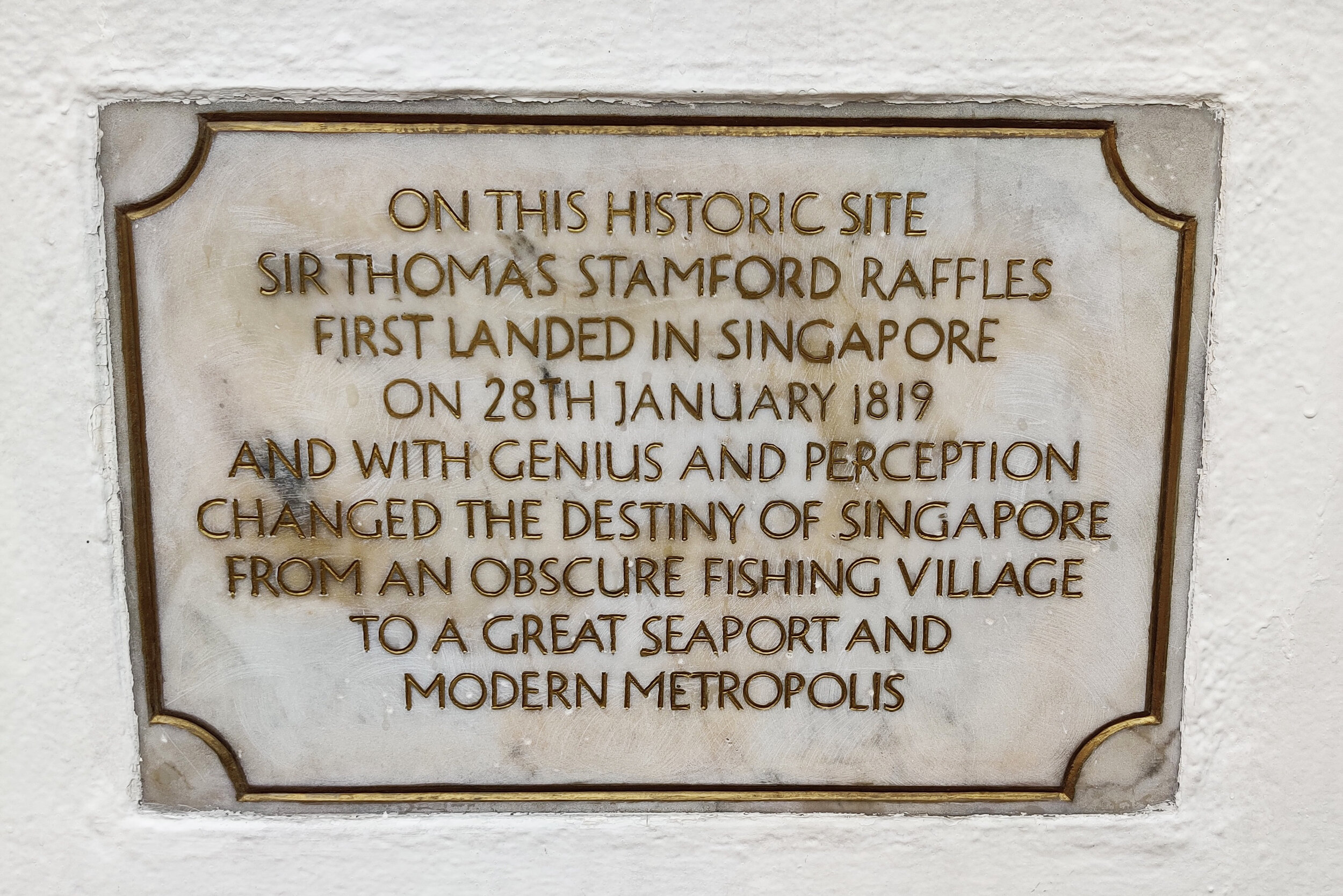(Dis)locating the Founding Myth: Public Sculpture and the Singapore Story
Editor’s note: Fieldnotes are brief write-ups designed primarily for publication on our Instagram that describe a moment, encounter or object from research. By publishing these short narratives on our website we also maintain a central archive.
Citation: Mah, James. “(Dis)locating the Founding Myth: Public Sculpture and the Singapore Story.” The Jugaad Project, 3 Aug. 2020, thejugaadproject.pub/fieldnotes-public-sculpture-singapore [date of access]
Figure 1. Photo by James Mah.
Even as the Black Lives Matter movement leaves no colonial monuments unturned in the United States, there is a discordant sense of quiet surrounding similar structures in Singapore. Stamford Raffles continues to stand tall against the backdrop of gleaming skyscrapers along the Singapore River [Figure 1], more than two centuries after he first landed on the island as an official of the British East India Company. [1] As one of the prophetic figures of the Singapore Story, he purportedly transformed an “obscure fishing village” into a “great seaport”. [Figure 2] Anything with the Raffles brand, from hotels, hospitals to schools, is a guaranteed hit with a public used to consumption as a means of exercising their limited freedoms. [2]
Figure 2. Photo by James Mah.
Figure 3. Photo by James Mah.
Figure 4. Photo by James Mah.
Figure 5. Photo by James Mah.
However, a founding myth so intertwined with the rituals of a freewheeling economy loses its charm during a pandemic. Tourists usually follow in the footsteps of Raffles, supporting local employment and enhancing Singapore’s reputation as a “modern metropolis”. Today, they are nowhere to be found. Structural inequities which the Singapore Story neglects, including the plight of migrant workers [3], treatment of minorities [4], and lack of social mobility [5], are magnified. It becomes increasingly apparent that the open, cosmopolitan and rugged Singapore chronicled by the smaller statues along the Singapore River has its trade-offs [Figures 3, 4 and 5].
Whether depicting a stoic Raffles or everyday scenes from a bygone past, it is only by widening the frame and locating these figures [Figure 6] in their larger social contexts, that they can do more to subvert than prop up the ideas they were built to represent.
Figure 6. Photo by James Mah.
References
[1] Syed Hussein Alatas, Thomas Stamford Raffles, 1781-1826, Schemer or Reformer? (Singapore: Angus & Robertson, 1971).
[2] Syed Muhd Khairudin Aljunied, “Sir Thomas Stamford Discourse on the Malay World: A Revisionist Perspective”, Sojourn: Journal of Social Issues in Southeast Asia 20, no. 1 (2005): 1-2; Joan C. Henderson, “Conserving Colonial Heritage: Raffles Hotel in Singapore”, International Journal of Heritage Studies 7, no. 1 (2001): 7-24.
[3] Dewey Sim, Kok Xinghui and Kimberly Lim, “Coronavirus: after Little India riot, Singapore promised migrant workers decent housing. What happened?”, South China Morning Post, 2 May 2020.
[4] Yin Lin Tan, “In 2020, Singapore Still Doesn’t Know How To Talk About Race”, Ricemedia, 6 July 2020,
[5] Christy Yip and Ruth Smalley, “‘If no work at all, how?’ Low-income families grapple with zero income, higher expenses amid circuit breaker”, Channel NewsAsia, 1 May 2020.












